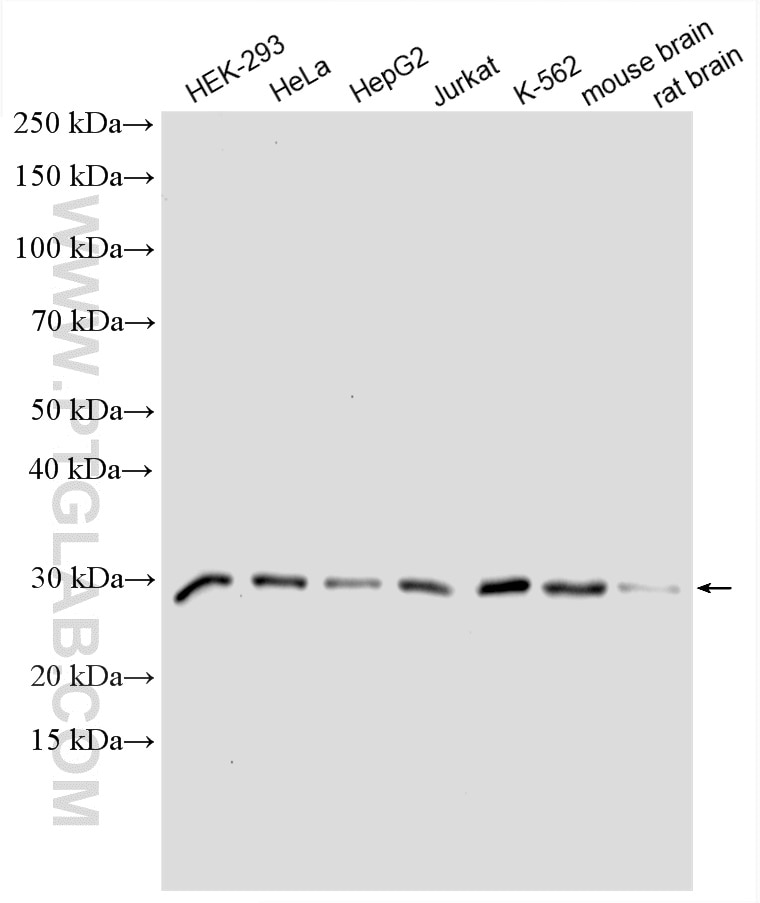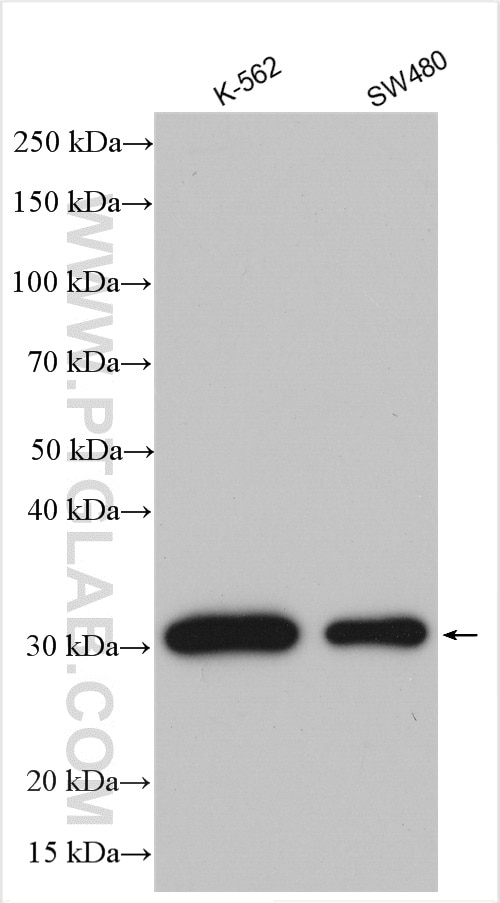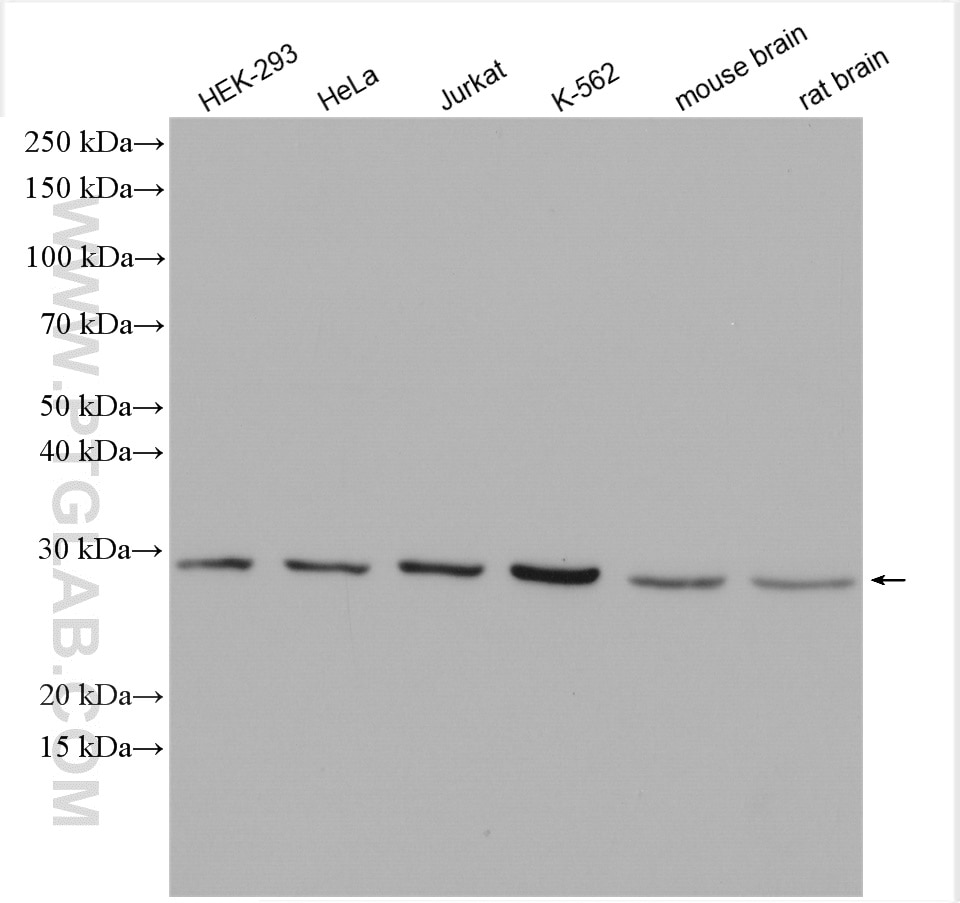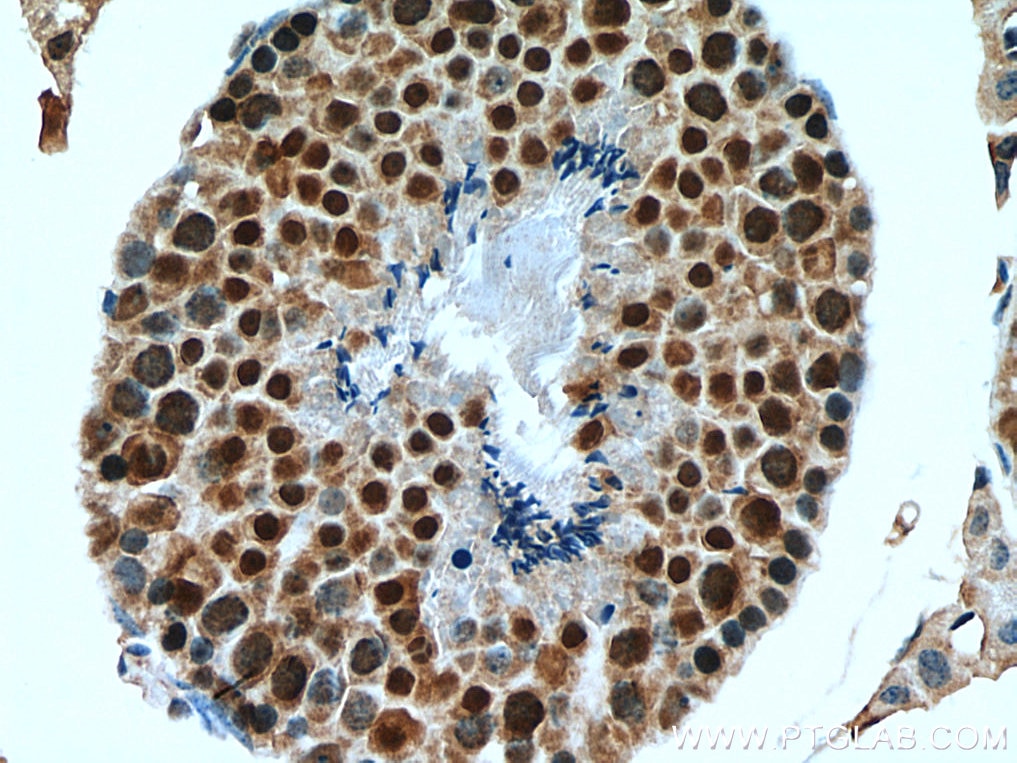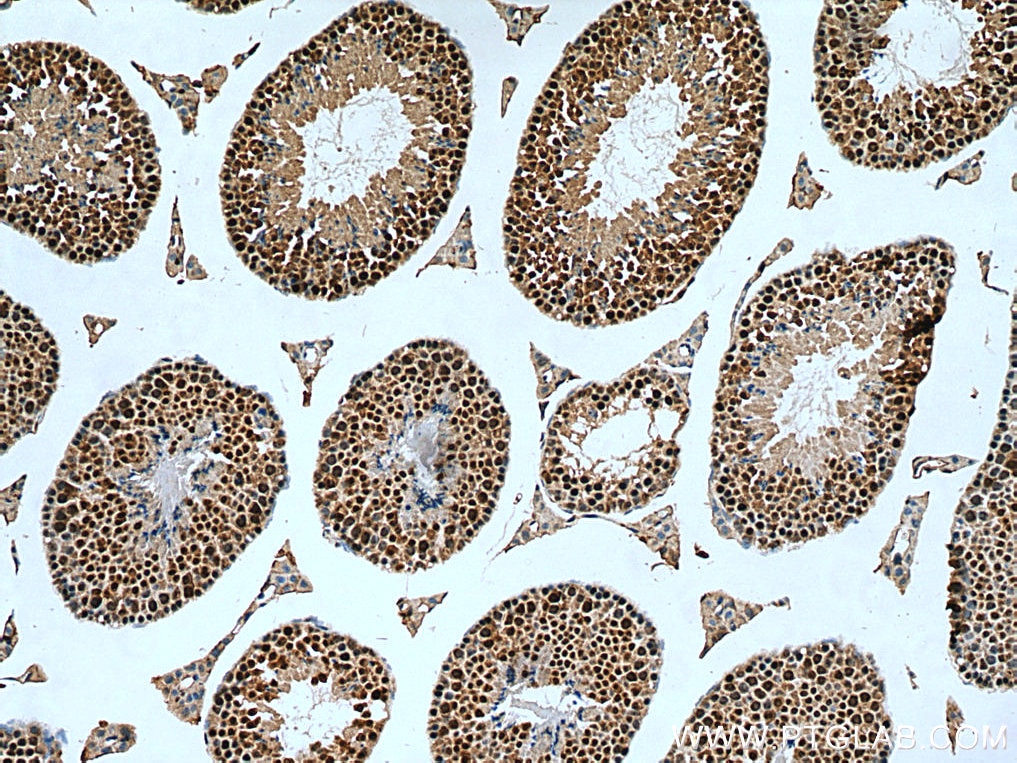Anticorps Polyclonal de lapin anti-GID8
GID8 Polyclonal Antibody for WB, IHC, ELISA
Hôte / Isotype
Lapin / IgG
Réactivité testée
Humain, rat, souris
Applications
WB, IHC, IF, ELISA
Conjugaison
Non conjugué
N° de cat : 24479-1-AP
Synonymes
Galerie de données de validation
Applications testées
| Résultats positifs en WB | cellules HEK-293, cellules HeLa, cellules HepG2, cellules Jurkat, cellules K-562, cellules SW480, tissu cérébral de rat, tissu cérébral de souris |
| Résultats positifs en IHC | tissu testiculaire de souris, il est suggéré de démasquer l'antigène avec un tampon de TE buffer pH 9.0; (*) À défaut, 'le démasquage de l'antigène peut être 'effectué avec un tampon citrate pH 6,0. |
Dilution recommandée
| Application | Dilution |
|---|---|
| Western Blot (WB) | WB : 1:500-1:2000 |
| Immunohistochimie (IHC) | IHC : 1:1000-1:4000 |
| It is recommended that this reagent should be titrated in each testing system to obtain optimal results. | |
| Sample-dependent, check data in validation data gallery | |
Applications publiées
| WB | See 8 publications below |
| IHC | See 1 publications below |
| IF | See 1 publications below |
Informations sur le produit
24479-1-AP cible GID8 dans les applications de WB, IHC, IF, ELISA et montre une réactivité avec des échantillons Humain, rat, souris
| Réactivité | Humain, rat, souris |
| Réactivité citée | Humain, souris |
| Hôte / Isotype | Lapin / IgG |
| Clonalité | Polyclonal |
| Type | Anticorps |
| Immunogène | GID8 Protéine recombinante Ag19751 |
| Nom complet | chromosome 20 open reading frame 11 |
| Masse moléculaire calculée | 228 aa, 27 kDa |
| Poids moléculaire observé | 30 kDa |
| Numéro d’acquisition GenBank | BC032120 |
| Symbole du gène | GID8 |
| Identification du gène (NCBI) | 54994 |
| Conjugaison | Non conjugué |
| Forme | Liquide |
| Méthode de purification | Purification par affinité contre l'antigène |
| Tampon de stockage | PBS with 0.02% sodium azide and 50% glycerol |
| Conditions de stockage | Stocker à -20°C. Stable pendant un an après l'expédition. L'aliquotage n'est pas nécessaire pour le stockage à -20oC Les 20ul contiennent 0,1% de BSA. |
Informations générales
The GID8 protein is a component of the Glucose-Induced Degradation-deficient (GID) complex, which plays a key role in ubiquitin-mediated protein degradation, a pathway used to regulate protein turnover in eukaryotic cells. Initially discovered in yeast, GID8 acts as a scaffold protein that is essential for the assembly of the multi-subunit GID complex and for substrate recognition. This complex plays a significant role in metabolic regulation, such as degrading fructose-1,6-bisphosphatase (FBPase) during the shift from gluconeogenesis to glycolysis. In humans, GID8 is part of the CTLH complex, which is associated with various cellular processes including cell cycle regulation, apoptosis, and cancer progression.
Protocole
| Product Specific Protocols | |
|---|---|
| WB protocol for GID8 antibody 24479-1-AP | Download protocol |
| IHC protocol for GID8 antibody 24479-1-AP | Download protocol |
| Standard Protocols | |
|---|---|
| Click here to view our Standard Protocols |
Publications
| Species | Application | Title |
|---|---|---|
PLoS Genet Role of Bicaudal C1 in renal gluconeogenesis and its novel interaction with the CTLH complex. | ||
Sci Rep Tagging enhances histochemical and biochemical detection of Ran Binding Protein 9 in vivo and reveals its interaction with Nucleolin. | ||
bioRxiv Genome-wide screen of Mycobacterium tuberculosis- infected macrophages identified the GID/CTLH complex as a determinant of intracellular bacterial growth | ||
Cancer Lett YTHDF1 regulates GID8-mediated glutamine metabolism to promote colorectal cancer progression in a m6A-dependent manner | ||
Mol Cell mTORC1-CTLH E3 ligase regulates the degradation of HMG-CoA synthase 1 through the Pro/N-degron pathway | ||
Nat Commun Genome-wide screen of Mycobacterium tuberculosis-infected macrophages revealed GID/CTLH complex-mediated modulation of bacterial growth |
Avis
The reviews below have been submitted by verified Proteintech customers who received an incentive for providing their feedback.
FH H (Verified Customer) (09-27-2020) | GID8 was pulled down with MAEA-flag, so I could tell which band is GID8. But without IP, it would be difficult to tell which band is the GID8, because the on-target band signal is too weak, while off-target band signals are strong in HEK293T cells
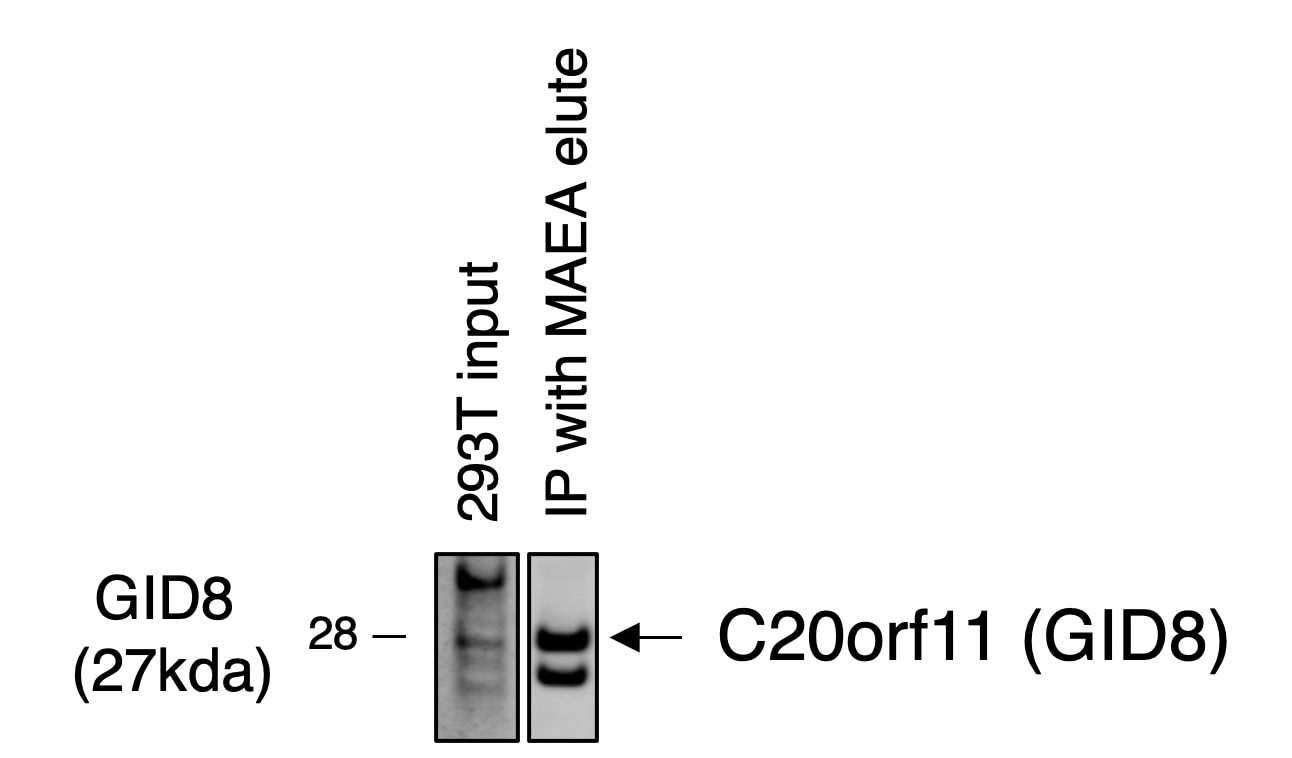 |
